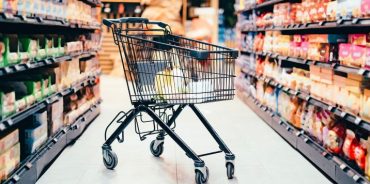If Perception is Reality, Grocers Need to Better Connect Base Price and Promotions
This article originally appeared in RIS News in July 2023.
The legendary retailer John Wanamaker was once asked what he thought about advertising. “Half the money I spend on advertising is wasted; the trouble is I don’t know which half.”
You can say the same about grocery promotions. Although base price is 2X more important to shoppers than promotions when it comes to price perception, promotions can make the winning difference at a time when shoppers believe prices are higher than they are, and when they believe that grocers are earning higher profit margins. The question is how to make that difference. What money is being wasted?
There is one overall challenge in shaping perception: unifying price and promotion for the sake of the customer experience.
Consider the customer in-store shopping experience; when a customer walks in, they likely first encounter the weekly ad before seeing a barrage of signage and displays showing items that may or may not be included on the ad. While trying to reconcile this new information with whatever offers they’ve been sent through the store’s loyalty program, they see more discounts at shelf that often include promotion mechanisms ranging from simple BOGOs to complex cross-category Must-Buys, all compounded by a two-tier pricing scheme for members of the loyalty program. According to a classic study, only about half of customers can accurately recall the price of an item they just picked up; perception is reality for customers.
And there are other challenges: supplier trade funds & offers disconnected from consumer demand; data-poor decisions based on old plans and/ or intuition; non-strategic, last-minute messaging & execution and lack of an end-to-end process. In all this, the missing piece is the consideration that should ideally be at the forefront of decisions: What’s best for customers? For grocers to make customer led, data driven decisions requires the ability to analyze first-party data, which typically comes in the form of customer loyalty data.
What does customer-first pricing feel like?
Now, what if you could transform that confusing shopping experience at the top of this article into a fun and exciting one with a unified message (value proposition). While base price matters more to price perception than promotions, the truth is that promotions create excitement. In our annual Retailer Preference Index (RPI) report, we rank top grocers throughout the US not just according to financial performance metrics, but emotional connection as well. In fact, we give them equal weight. The key to striking the right balance between base prices and relevant promotions is to better understand customer data leveraging science.
Here are five things to consider improving overall price perception:
1. Set a combined price and promotion strategy from the start … collaboratively
If the problem is that both internal stakeholders and CPGs are not collaborating, then the solution is to bring them together from the start. This is the time to set the strategy, and the flow of communications to the shopper. Once the retailer has defined a topline strategy, Joint Business Planning (JBP) sessions should occur to gain input and alignment to drive coordinated actions.
2. Identify products most important to base price perception
On average, five percent of products account for 25% of total sales. So, while a traditional grocer can’t price match every product against a discounter that offers the “everyday low pricing of a Walmart,” it can compete on key items that customers are always looking for like, say bananas, coffee, or ground beef. And as we show later, it’s an opportunity to reinforce the grocer’s value statement.
3. Understand how to treat products when on promotion
This is a competency that clearly requires data science. With adequate modeling capabilities, it’s possible to understand the depth and frequency at which a product should be promoted. What happens to demand when promoting a product from four dollars to three? What is the optimal promoted price? How often should this product be promoted?
4. Layer in relevant personalized offers that provide value to customers
And this is a competency that requires the highest degree of data science. With science, we can create individual workstreams with shoppers and optimize the pricing to the moment of purchase. While broad-based promotions help communicate above-the-line price perception, personalized offers have become increasingly important as an individualized way of creating value for your most important customers.
5. Make sure to communicate a consistent value statement across all channels
Discount grocers aim to win with everyday low prices. But with a clearly communicated value statement, customers will better understand the value they are getting when shopping at your store, regardless of whether they are new or loyal customer. On the end cap, in the aisle, using the app, on the paper receipt, the customer should have a clear understanding of the value they received.
Change indeed. As customers struggle through increasingly difficult times, grocers must leverage more than just base prices to grow loyalty and build trust. Again, base price is the most important lever to improving perception. But with a unified price and promotion strategy connected to customer data science, promotions can enable grocers to connect emotionally with their customers, wherever they are.
TOPICS
RELATED PRODUCTS
Boost value perception and execute promotions that drive results
Price & Promotions solutionsThe latest insights from our experts around the world




